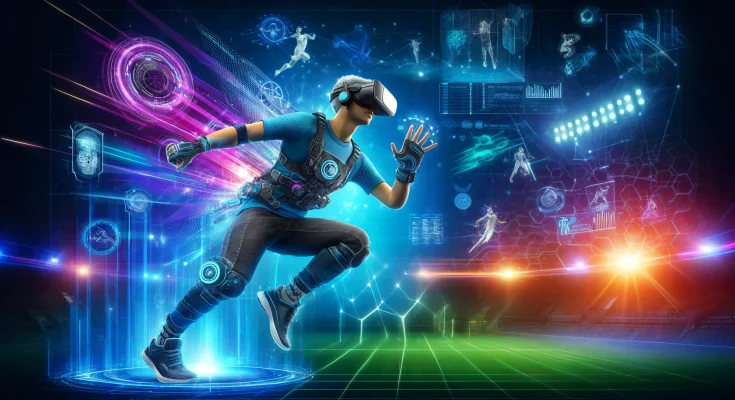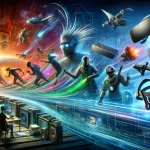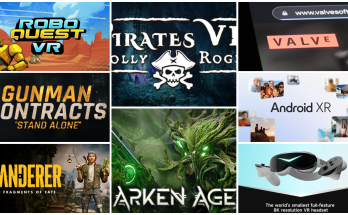Introduction to the Dynamic World of VR Esports
Virtual reality (VR) esports represents a revolutionary leap in the world of competitive gaming, transforming the landscape into an immersive, three-dimensional battlefield. With the ability to step inside the game itself, VR esports is not merely an evolution of gaming—it is a complete reinvention. This comprehensive exploration delves into the intricacies of VR esports, from the advanced technology that powers it to the vibrant ecosystem of games, players, and tournaments that define its current state and hint at its promising future.
Unpacking the Technology: The Foundation of VR Esports
At the core of VR esports lies sophisticated technology designed to immerse players completely in virtual environments. VR headsets, equipped with high-resolution displays and precise head-tracking capabilities, along with motion sensors and haptic feedback systems, create a convincing sense of presence that is essential for competitive gaming. These technologies not only simulate visual and auditory environments but also enable players to interact physically with the virtual world, a fundamental aspect that sets VR esports apart from traditional gaming setups.
Key Technologies Driving VR Esports:
- High-Fidelity VR Headsets: Crucial for delivering immersive visual and auditory experiences.
- Motion Tracking Systems: Allow for precise monitoring of player movements, translating them into the game in real-time.
- Haptic Feedback: Enhances the tactile experience, providing physical sensations that mimic real-life interactions.
The Pioneers: Leading Games in VR Esports
Certain titles have risen to prominence within the VR esports scene, driven by their suitability for competitive play and their ability to engage both players and spectators.
Echo Arena: Zero-Gravity Innovation
Echo Arena exemplifies the unique potential of VR esports, offering a zero-gravity experience that combines strategy, teamwork, and physical skill. Players navigate a three-dimensional arena with the freedom of movement that only VR can provide, engaging in a game that resembles a futuristic blend of ultimate frisbee and hockey.
Beat Saber: A Rhythmic Battle
In Beat Saber, players slash through blocks representing musical beats, combining elements of rhythm gaming with physical activity. This game tests reflexes, precision, and musical timing, challenging players to maintain composure under pressure.
These games are just the tip of the iceberg, with each title providing a unique blend of physical and strategic challenges that are key to the appeal of VR esports.
Competitive Arenas: Tournaments and Player Communities
VR esports has grown from informal meetups to major global competitions. Tournaments like the VR Challenger League and the VR Master League signify the growing interest and investment in this field, featuring international competitions that attract players worldwide. These events are not only competitive showcases but also crucial for community building and professional networking within the VR esports ecosystem.
Training and Preparation: The Athlete’s Regimen in VR Esports
Training for VR esports is as demanding as that for any physical sport. Players must maintain peak physical condition to maneuver through virtual environments effectively, which can be physically taxing over extended periods.
Physical and Virtual Training Techniques:
- Cardiovascular and Strength Training: Ensures that players can endure the physical demands of VR gameplay.
- Reflex Conditioning and Tactical Drills: Develop quick reactions and strategic thinking within the virtual environment.
Advanced analytics tools also play a critical role, enabling players to refine tactics and improve performance through data-driven insights.
Challenges and Innovations: Navigating the Future of VR Esports
Despite its rapid growth, VR esports faces several challenges, from the technical issues like motion sickness and latency, to the physical demands placed on players. However, these challenges also drive innovation within the industry.
Solutions and Opportunities:
- Enhancing Player Safety: Developing protocols and equipment to reduce the risk of injury.
- Improving Spectator Experience: Integrating mixed reality (MR) to provide more engaging viewing experiences.
The Future Trajectory of VR Esports
The future of VR esports is intrinsically linked to technological advancements in VR hardware and software. As devices become more accessible and user-friendly, the entry barriers to VR esports will diminish, allowing for a more diverse participant base. This accessibility could transform VR esports from a niche interest to a mainstream phenomenon, merging the physical intensity of traditional sports with the boundless possibilities of virtual realms.
Conclusion: The Expanding Universe of VR Esports
VR esports stands at a pivotal point, poised to redefine not just gaming but the very concept of sport itself. As technology advances and more players enter the arena, VR esports promises to continue its trajectory toward becoming a key component of competitive sports and entertainment. With each technological stride, VR esports not only expands its reach but also enhances its ability to deliver thrilling, immersive experiences that are unlike anything else in the gaming world.








